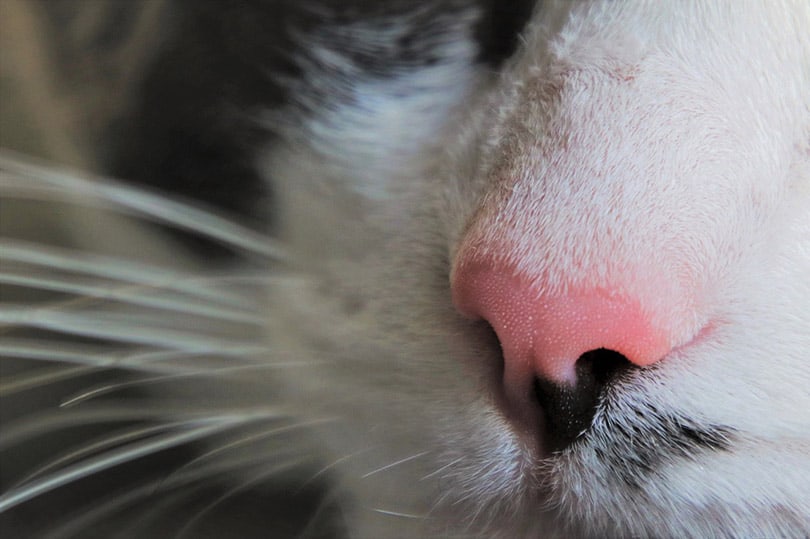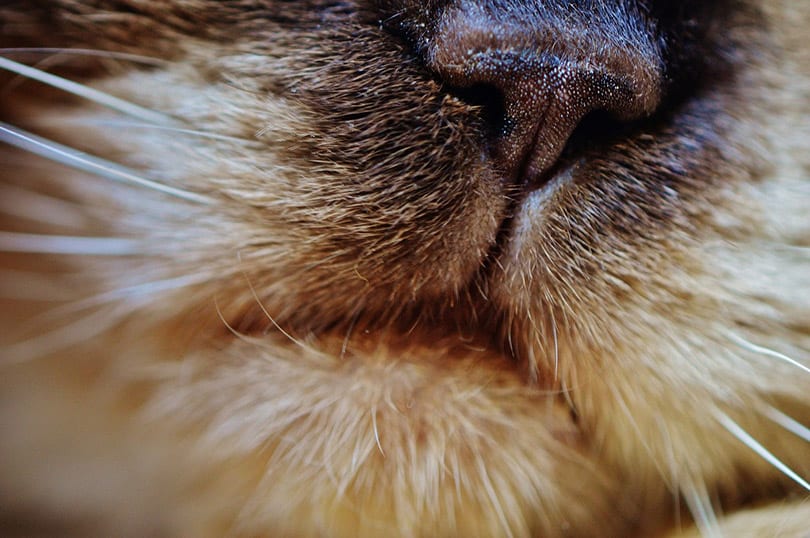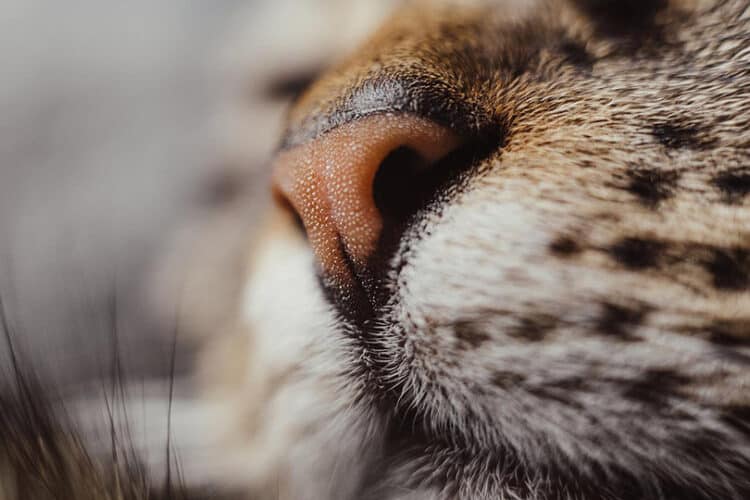In a moment of complete closeness with your kitty, they might reach up and touch you on the face with their little wet nose. It’s adorable, and you love to be the recipient—but it might have just struck you that you aren’t sure why your cat’s nose is wet!
Actually, we assure you that cats’ noses are often damp—and are generally supposed to be wet. And the reason is typical that the wetness helps them pick up on surrounding scents and navigate accordingly. But let’s explain the ins and outs of such a topic.
Wet Kitty Nose—What Does It Mean?
We try very hard as humans to understand our pets—including how their bodies work—so we can know what’s healthy and what isn’t. We have all heard the rumors that cats, and even our canine buddies, have wet noses.
Though the meaning can differ slightly, it really only comes down to three solid options. Two are totally normal, and one might require vet attention, depending on the severity and underlying cause.

1. Cats Use Wet Noses to Track Scent Better
You probably know that your cat uses their sense of smell and taste for just about everything. This powerful combination tells them about their surroundings, such as potential predators or prey lurking about. They can track mates, find friends, and locate home this way.
Cats get a majority of their information using their Jacobsen’s organ. This little organ does a tremendous amount for your cat’s senses. It’s pretty amazing that our cats are already so skilled at smelling–but this makes smell an even stronger sense.
Often, cats use this sense to detect food. It’s speculated that cats soften and lick their noses to gather more scent cues in the air toward their Jacobson organ.
The Flehmen Response
Have you ever looked at your cat, and it seems like they’re in a daze, mouth dropping open? This is an action called the Flehmen response, and it actually has a particular purpose. The Flehmen response works with your cat’s Jacobsen organ using tastebuds and olfactory systems to get environmental details.
When your cat does this, they are actually curling back their upper lip to show the front teeth in a grimacing fashion. They can detect pheromones, waste from other animals, and scent gland markings.
2. Cats Use Wet Noses to Cool Off and Control Body Temperature
Cats need to regulate body temperature just like us. If they are a bit too toasty and need to cool down, your kitty’s nose releases sweat, which helps combat the heat.
Interestingly, their paws have the same effect. When the cat is hot, they sweat on the soft, hairless portions of their bodies instead of sweating all over.
If you notice your cat has a wet nose more often during higher temperatures, you can probably conclude that sweat is the culprit and your cat’s body is doing its job.
3. Your Cats Nose Might Be Draining Due to Allergies or Illness
If your cat has allergies or something a little more sinister—like an upper respiratory infection, it dampens the nose with nasal drainage. You might notice that the mucous production changes colors–turning green, rusty red, or yellow.
If your cat has a runny nose, it’s essential to look for contributing factors. And, if necessary, a vet visit might be the surefire option–especially if they are having trouble breathing.
Upper Respiratory Infections vs. Allergies
We talked a little bit about contributing factors related to allergies or upper respiratory infections. If you’re unsure of the difference, we can explain how to tell.
However, our information is not a replacement for veterinary guidance. So, if you have significant concerns, seek professional advice.

Upper Respiratory Infections
Upper respiratory infections cover many bacterial and viral bugs that can develop in your cat’s body. Using your cat as the host, these infections attack the airways and lungs, creating many symptoms. Some viral infections are worse than others, causing very poor reactions.
Managing any upper respiratory infection is crucial, especially in multi-pet households. Viruses can spread quickly from cat to cat through saliva, proximity, and fighting/playing.
So if you notice any signs of an upper respiratory infection, it’s essential to seek medical attention immediately.
Allergies
Cats with allergies typically show similar symptoms regardless of triggers. But cats can have allergic responses to food and the environment. It might be a little hard to pinpoint at first, but you can find the source and create a plan of care through visual observation and specific lifestyle changes.
If you suspect allergies, only your vet can make the formal diagnosis. It would be best if you went in for an appointment anytime it seems like your cat is uncomfortable or the quality of their life is affected.
Don’t Panic! Dry Noses Are Okay, Too
So now you know that your cat’s little wet nose is perfectly normal, functional, and healthy. It’s also perfectly fine if you have a kitty with a rough, dry nose— permitting they seem healthy otherwise.
However, if you suddenly notice a dry nose accompanied by other symptoms, you should get them to your vet right away for an evaluation. It could be simple, but we wouldn’t want to let something complicated slip through the cracks when it could’ve been prevented.
Conclusion
So, your cat’s cute little nose is wet by nature and really shouldn’t pose a problem unless an infection is suspected. Just enjoy the wet little kisses you get, knowing your cat is happy and healthy—and maybe a little toasty.
If you are worried about potential health problems, always go with your gut. Call the vet if you feel there is a bigger problem.
Feature Image Credit: Pixabay














